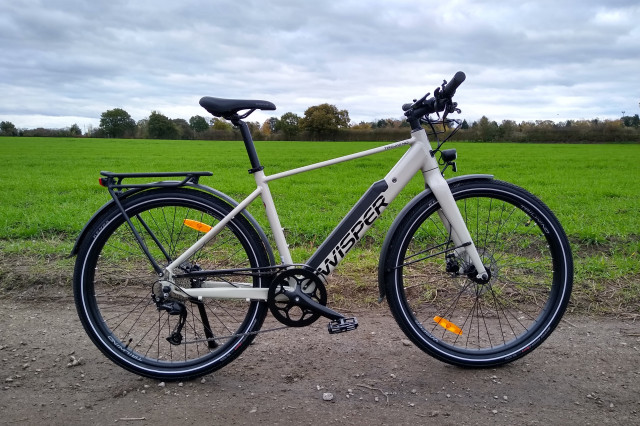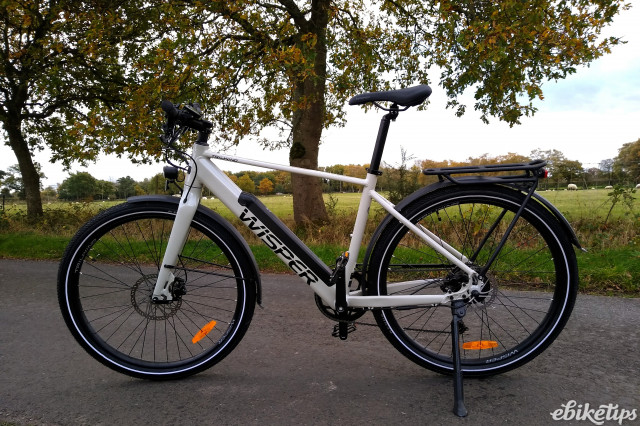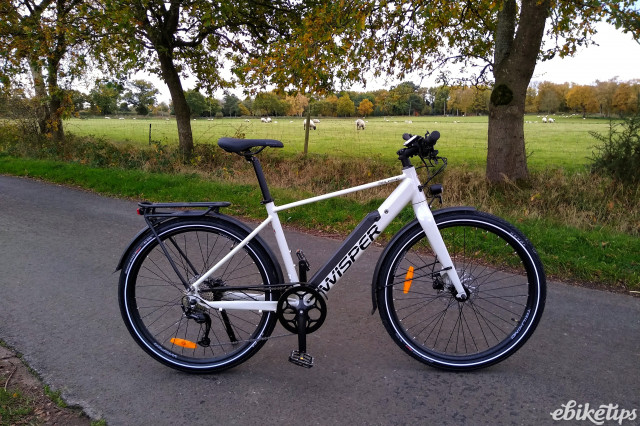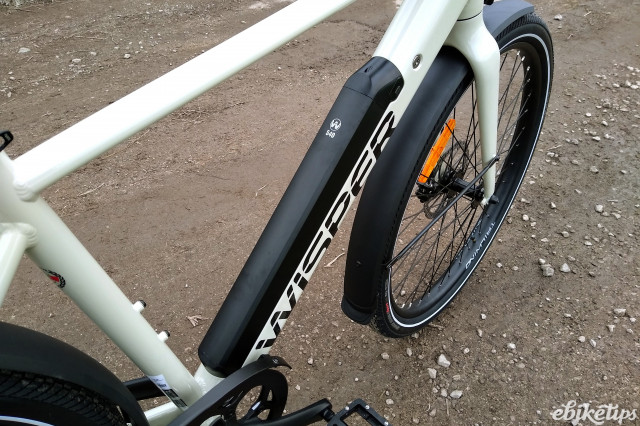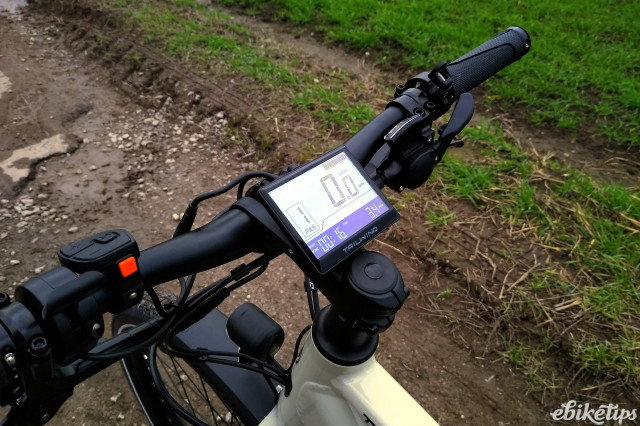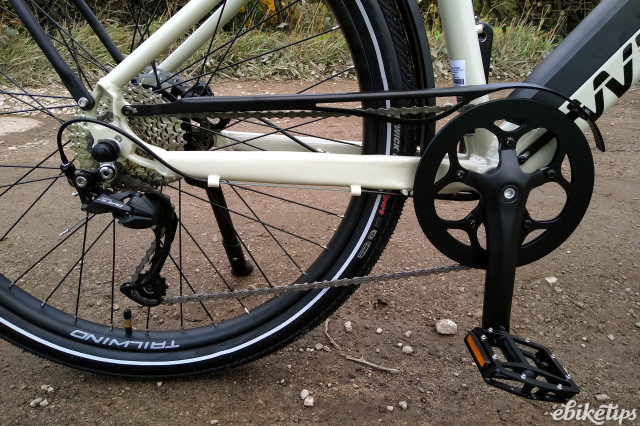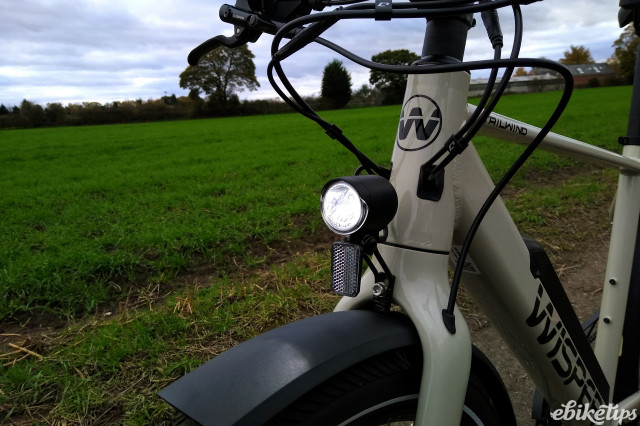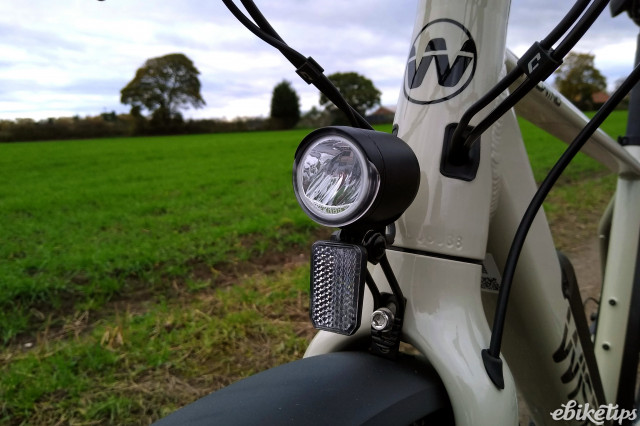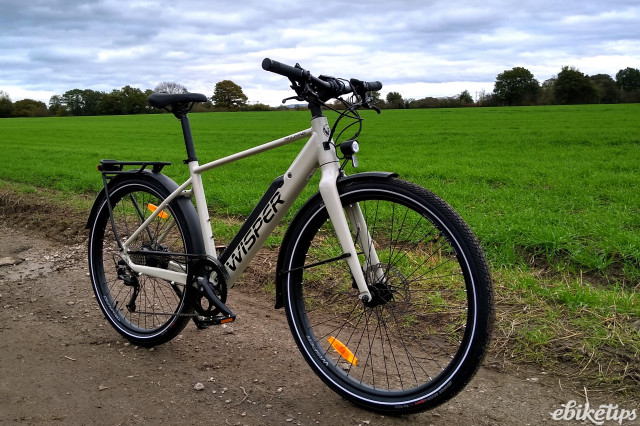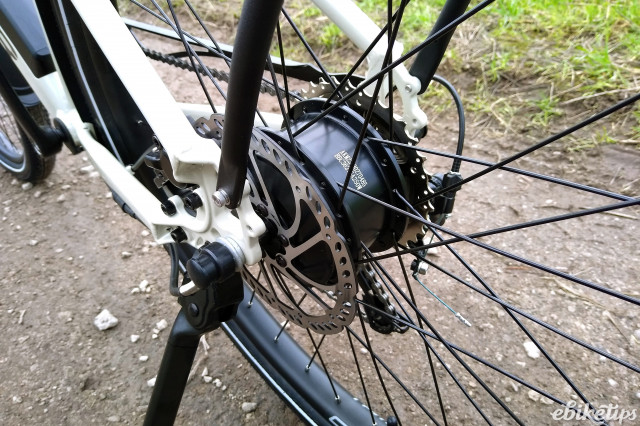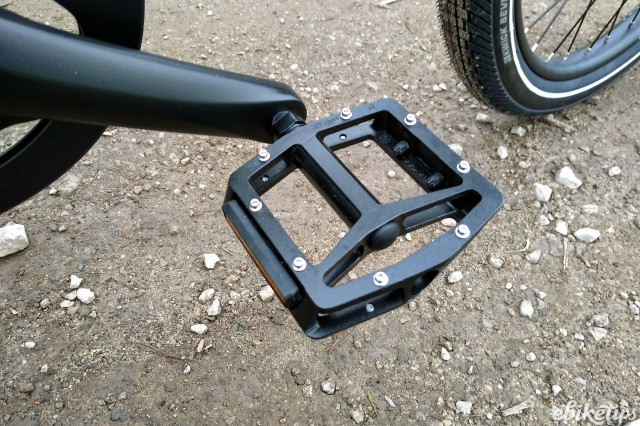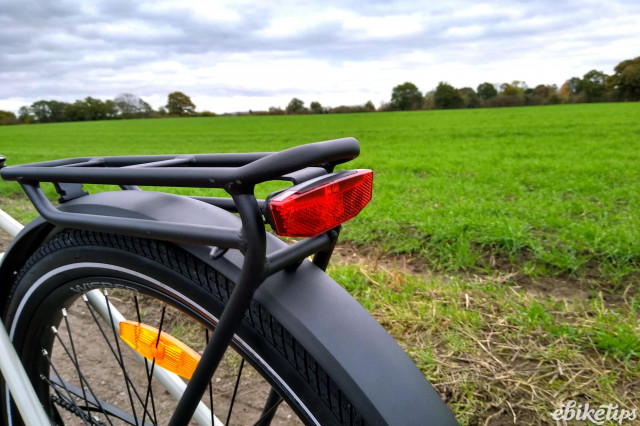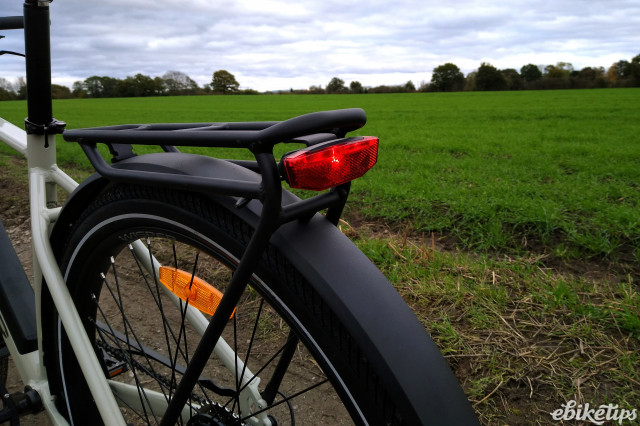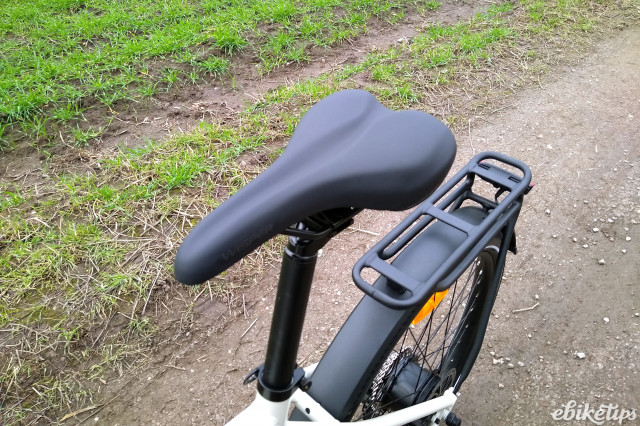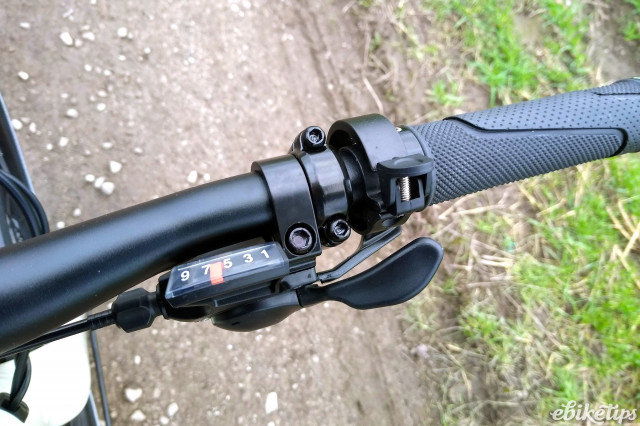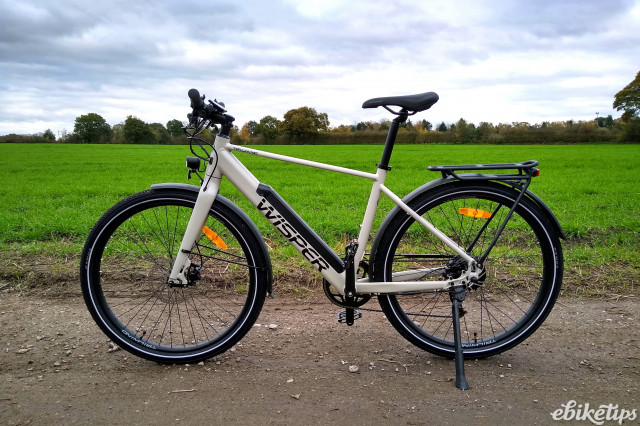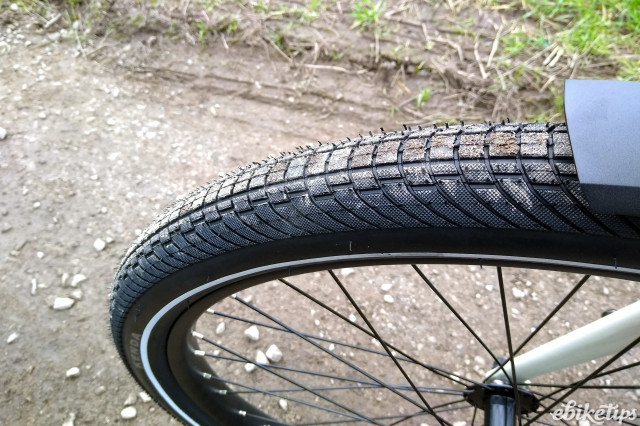Wisper Tailwind Comfort
Overview
- Built to last
- Handy thumb throttle when riding in lower levels
- Removable battery
- Battery meter unreliable
- Not the lightest
Kent-based Wisper have been making e-bikes since 2005. The Tailwind Comfort is a rear hub motor hybrid e-bike with sizeable tyres, a rack and mudguards. Like many of Wisper’s bikes, it is also available as a throttle-only e-bike. The version tested here is however the standard pedal-assist one.
Wisper offer three different builds for the Tailwind with low and standard crossbar frames for each. There’s the relatively bare bones Tailwind City, which starts at £1,899; the Tailwind Trail with a suspension fork and knobbly tyres, which is available from £2,149; and the Tailwind Comfort, which is geared more towards practicality and – rather obviously – comfort.
The Comfort costs £2,049 with a 360Wh battery or £2,249 with a 540Wh battery.
The bike
Viewed from afar, the Tailwind is a very good-looking e-bike and closer scrutiny doesn’t in any way diminish that initial good impression. From the neat cabling to the rock solid rack, chain guard, mudguards and lights, pretty much everything about the bike seems high quality and well put together.
It also comes with 9-speed Shimano gears, chunky Kenda Kwick 27.5in x 2.2in high volume tyres, wired LED lights and hydraulic disc brakes.
It all feels very robust - albeit that does also mean that it weighs 22kg in this build.
The rear motor is Wisper’s own, controlled via the usual handlebar remote. Plenty of information (speed, battery level, assistance level, average speed, trip distance and lifetime odometer) is provided by a rather functional-looking LCD display positioned over the stem. The battery is removable, which is vital for anyone who can't get their bike near a plug socket.
Another interesting feature is a thumb throttle, which will provide assistance up to 4mph (6km/h) or up to 25km/h (15.5mph) when pedalling. We’ll come back to this in a moment.
The ride
The Tailwind’s motor offers four levels of power assistance. The three lower ones roughly correspond to 100W, 175W and 250W (maybe a bit more when fully charged and a bit less when you’re running low on juice). Level four, however, will peak way above that, topping 500W at times according to the display.
This is absolutely fine, by the way. UK law states that to be considered an electrically-assisted pedal cycle (EAPC) an e-bike must have a motor with a “continuous rated power” of no more than 250W. Many setups therefore offer peak power output above that somewhat illusory 250W ceiling.
In that top level, the Tailwind Comfort feels plenty powerful enough for most terrain. It’s best on shallower uphill slopes where you can keep your speed up and less good on double digit gradients when your pace drops - but even then, it doesn’t ever really feel like it’s labouring. It feels relaxed and untroubled – comfortable, you might say. It got me up my 1.5km 5% benchmark climb without my breaking sweat, for example, despite a stretch at 10%.
Like most rear hub e-bikes, it’s primarily for cruising along at or near the 25km/h cut-out limit. In all but the hilliest parts of the UK, where you might be better off with a mid-motor, it’ll be a great fit.
Riding at level four, I did find there were times when the power would phase in and out a little abruptly at the assistance limit. It wasn’t a real kangaroo petrol sensation, but it was discernible.
I suspect this is because Wisper don’t really intend level four for general riding on flat terrain. It’s more of a no holds barred option for when you really need it. And this is where the thumb throttle comes in.
The thumb throttle is positioned between your hand and the main power controls and feels like nothing more than an awkward irrelevance when riding with the assistance level set to max. However, in levels one and two in particular, it really comes into its own. This is because it basically gives you easy, instant access to maximum assistance without having to shift up and down again with multiple button presses.
Range
I found that levels one and two didn’t produce the same jerkiness at 25km/h. The downside, of course, was less power available when I wanted to skip up a short, sharp slope or accelerate away from a set of lights. The thumb throttle means you can easily access full power on these occasions and when you release it, the bike will immediately be back at your chosen assistance level.
That makes levels one and two a lot more appealing, which should help deliver a bit more range per charge (even if that oh-so-tempting throttle can be damn hard to resist).
Wisper suggest a maximum range of 70 miles (110km) with the 540Wh battery tested here, which doesn’t seem too unreasonable. Battering along almost exclusively in level four, I covered 80-85km (about 50 miles) with 500-or-so metres of climbing (1,600ft). Using the power a little more judiciously with occasional (okay, more than occasional) use of the thumb throttle, I would get more like 95km (60 miles) with around 600m (2,000ft) of climbing.
This was in cold, wintry conditions too when you'll always get less out of a battery. For more on this, see our guide to e-bike battery range.
This does however bring me to my one big gripe with the Tailwind, which is the battery meter. On one occasion I’d left the bike with two bars left out of five. When I next turned it on, that momentarily shot up to three bars, but then to flashing empty within a couple of hundred metres.
The next time I got down that low, it was mid-ride. The display spent a while on two bars but then suddenly vaulted straight to flashing empty without at any point showing one bar.
This is pretty unhelpful and the upshot was that from then on, if the display was suggesting the battery still retained half its charge, I would be inclined to head for home.
Throttle-only
I mentioned earlier that a throttle-only version of this bike is also available and you may be wondering about the legality of such a vehicle.
Throttle-only e-bikes can in fact be ridden much like regular e-bikes with no helmet, no registration and no tax or insurance. The reason they’re not more common is because each bike needs to be tested by the DVSA and Type Approved as an L1e electric bike in the 250W Low Powered Moped category.
This is not something you can get done just anywhere, but Wisper have found someone to carry out the tests and so are able to offer legal throttle-only versions of several of their e-bikes for an additional £200.
Value
In many ways the Wisper Tailwind Comfort is a consummate all-rounder. You could commute on it; you could go down the shops on it; and as a leisure bike with 2.2in tyres, there aren't many surfaces that are going to trouble it. (Tyre quality can be hard to gauge, but the Tailwind was unscathed during what was apparently hawthorn hedge cutting season in my part of the world.)
Put it like that and £2,249 seems a fair old price. But then it’s also worth considering whether this kind of adaptability is what you’re after as there may well be better (or cheaper) options if your needs are more specific.
If you're looking for a practical hybrid e-bike, another £150 gets you the ‘Fully Loaded’ version of the Ribble Hybrid AL e (£2,399) with a rack and mudguards. It’s a bit lighter and sportier than the Tailwind, but has a far smaller battery and narrower tyres. The £2,199 Raleigh Trace is a similar offering to the Ribble, but again with only a 250Wh battery. It's worth highlighting that the cheaper 360Wh Comfort still offers more battery capacity than both of these for £2,049.
If you're after more of a leisure e-bike, we reckon the Volt Alpine (£2,199) is the best performing hub motor e-MTB out there. You’d need to add a rack, lights and mudguards to make it as practical as the Tailwind Comfort though.
There are also a good few mid-motor leisure/trekking e-bikes around if you’re anticipating a little more off-roading or climbing. Decathlon’s Riverside 540e costs £2,199; the Neomouv Adonis 2 comes in at £2,360; and the Cube Reaction Hybrid Performance 500 costs £2,499.
The Wisper Tailwind Comfort may not be exceptional in any specific way, but it's so adaptable and well built that it's hard to imagine anyone could be dissatisfied with it.
2 comments
Yeah, that's true, Sriracha, but it's more a question of fitness-for-purpose. Hub motors are generally more efficient than mid-motors at 'typical' e-bike speeds, so if most of your riding is on less challenging terrain, you'll get more out of your battery.
This particular hub motor is still plenty powerful enough to get you up even steeper hills, it's just not working as efficiently when doing so.
The poorer performance going uphill - at slower speeds - strikes me as being an inherent weakness of hub motors. Since they sit on the wrong end of the gear train they are obliged to operate at the the same rpm as the rear wheel, which inevitably means that as the rpm drops so too does their power output, at precisely the point (going uphill) where the opposite is required.
